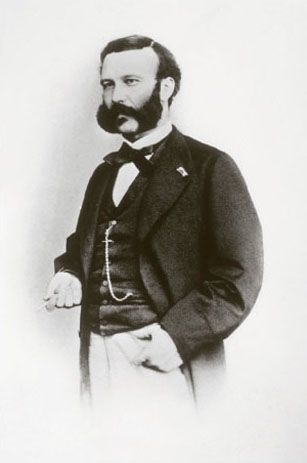2.3 The Red Cross
Humanitarian law was another area of international growth in the recognition of human rights. It gathered pace in the nineteenth century due to the work of Henri Dunant, a Swiss philanthropist. He witnessed several battles where great atrocities were committed by the armies of nation states. These experiences led him to attempt to establish a permanent system for humanitarian relief, where private societies would supplement the work of army medical corps of nation states. In 1863 a conference of sixteen nation states was organised and they chose the emblem of a red cross on a white background (the Swiss flag in reverse) to represent humanitarian aid. The 1864 Geneva Convention followed, where 12 nation states agreed to respect the community of military hospitals and their staff, to care for sick and wounded soldiers whatever their nationality and to respect the emblem of the Red Cross. This has since expanded to cover, for example, prisoners of war.
This has led to the general recognition that the conditions of the sick and the wounded, and the care of prisoners of war, were matters of concern for international law. In turn this made a major contribution to processes where respect for the individual became paramount and respect for human rights a generally recognised international obligation.

